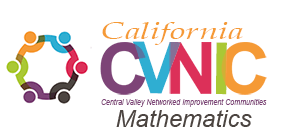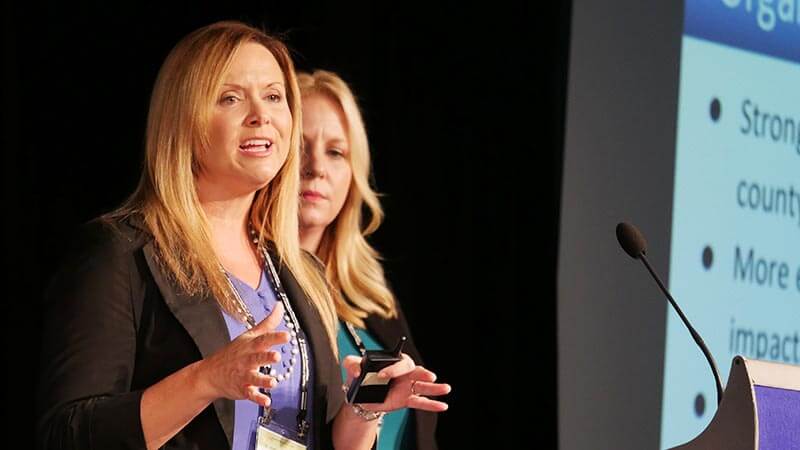Central Valley Networked Improvement Community, Tulare County Office of Education
Improving Middle-Grade Mathematics
The Central Valley Networked Improvement Community (CVNIC) is working to improve mathematics outcomes for 5th graders in seven very rural, agricultural districts in the Central Valley of California. As a whole, the Tulare County Office of Education, which operates the network, supports 43 districts and serves nearly 112,000 students, 78% of whom are from low-income families; 77% are Latinx, and 26% are English language learners.
CVNIC currently works with 12 schools serving more than 1,000 5th graders across Tulare County, which spans a geographic area the size of Connecticut, with 64% of the overall population socioeconomically disadvantaged. When CVNIC began two years ago, only 17% of 5th graders in those schools met state expectations for mathematics performance, which was below the overall performance of the county. Since then, that figure has increased to 25%, with performance in non-network county schools remaining stagnant at 21% and the state as a whole holding steady at 33%. Network classrooms have moved from below the countywide average for mathematics performance to outperforming the rest of the region.
NETWORK CLASSROOMS HAVE MOVED FROM BELOW THE COUNTYWIDE AVERAGE FOR MATHEMATICS PERFORMANCE TO OUTPERFORMING THE REST OF THE REGION.
With the aim of increasing 5th grade mathematics proficiency to 51% within the network by 2019, a multidisciplinary team of content experts, improvement experts, change experts, and practitioners worked together to identify the root causes for low mathematics achievement. This process included conducting teacher, student, parent, and administrator interviews; dissecting local and state achievement data; tapping into scholarly research about mathematics learning generally; and mapping out the system that contributes to poor performance. CVNIC then supported teams of teachers at individual schools to test improvement strategies through efforts such as creating a positive classroom culture, developing students’ beliefs that their abilities and competence can grow through hard work and effort, and engaging students in productive struggle around mathematical ideas and concepts.
VIDEO: A presentation by the Central Valley Networked Improvement Community, Tulare County Office of Education at the Spotlight on Quality in Continuous Improvement Symposium on November 15, 2018 in Washington, DC.
CVNIC used common protocols to test innovative change ideas and consolidate what they were learning at each site with the support of individual coaches. Those learnings were then shared across the network through hub facilitators, an online platform for collaborative improvement work, and district showcases at network meetings. To further build connections across isolated rural schools and districts, the county office set up a network Facebook group and supported cross-district collaboration focused on plan-do-study-act improvement cycles. CVNIC further supported this work by designing a strong measurement system that included leading and lagging indicators related to mathematics achievement; process and outcome measures relevant to the innovations being tested; and measures of the health and productivity of the network itself.
Tulare’s example is particularly important because most states have some form of intermediary entity—county offices of education, boards of cooperative educational services, intermediate units, or regional service centers—that provides services to geographically dispersed, often isolated rural schools and districts that may lack access to intellectual as well as material resources. CVNIC’s work in Tulare County shows that such intermediary entities can play an effective role in organizing and supporting a networked improvement community and in building the human and organizational capacities to effectively engage in improvement work and make improvement happen at scale.
Network Demographics*
- Districts: 7
- Students: 1,167
- Teachers: 43
- School sites: 12
- Gender:
- 48% male
- 52% female
- Ethnicity:
- 59% White
- 33% Latinx
- 1% African American
- 1% Asian
- 2% two or more races
- 81% socioeconomically disadvantaged
- 19% English language learners
* As reported by the Spotlight recipient.







